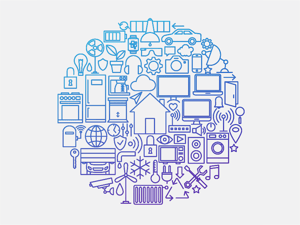Reliable cellular network is necessary for nearly every way we communicate in our era - from sending emails, to calling friends and coworkers, to posting on social media. The idea of communication goes even further than that, though. Are you familiar with IoT? The Internet of Things, or IoT for short, describes the way in which devices and the platforms on which they operate communicate. These "things" communicate over the cellular network, just like you do.
As it stands now, many "things" are already connected, and you may have some of these in your home. In your garage, your car's navigation and entertainment systems are controlled by cellular connections. Same with smart lighting in your living room, and maybe even the lock on your front door.
IoT is becoming more sophisticated, and it's moving quickly. As important as reliable network connectivity already is for IoT, it's only going to become even more important as time goes on. Let's explore the challenges and solutions in this arena.
The Challenge
Already, IoT is a heavy load for existing cellular networks to carry. Traditional cellular networks tend to not provide the optimal level of support necessary for even the current needs of IoT.
If it's already a challenge now, what will it look like in the future? Demand will likely far exceed the supply of available bandwidth. Wireless carriers are working hard to build new, more robust networks designed to better support IoT, but the process is understandably slow.
Weak or spotty cell signal can adversely affect inventories, revenue and security as connected devices become more and more common.
devices become more and more common.
Interestingly, many of the applications and devices connected to the Internet of Things use very little data, or only transmit at certain times. A lower-cost, lower-power and lower-data-speed solution can actually support the current connectivity needs and promote the growth of IoT in the meantime. Over 90 percent of the world’s population already has access to adequate cellular infrastructure, and with a little help bridging the connectivity gap, these networks can be leveraged to power the future as these new networks come online.
Bridging the Connectivity Gap
IoT devices work best with always-on, always-reliable cellular connectivity. Unfortunately, the most robust networks, (like LTE and the exciting possibility of 5G) aren’t going to be available everywhere, at least not immediately. And, many IoT applications support smart devices deployed in places and conditions where even the strongest cell networks will struggle to adequately serve (such as flood detectors located deep in the basement, or parking sensors in underground garages.)
To provide the convenience and practical value they promise, these devices need to be able to exchange data with their connected servers in-the-moment, even if they happen to be placed in a “dead spot”. As the number of devices continues to rapidly expand, and more burden is placed on the existing infrastructure, this basic requirement doesn’t change.
This is where cell signal boosting technology can bridge this costly — even dangerous — gap. Cell signal boosters ensure that whatever device is providing connectivity, linking the smart device to the cloud, can remain reliably connected. They accomplish this feat by collecting the outdoor cell signal from the strongest available sources via external antenna (situated on a roof, external wall, or other convenient surface) and routing it through an amplifier before distributing it inside a space that would otherwise be a “dead spot”.
High quality boosters and antennas, properly installed, can be connected to most cellular modems and gateways to provide consistent signal strength and improve data transfer speeds. They improve cell signal in remote areas, or where construction and other materials can impede signal and thereby cut off the exchange of communication.
Recent updates to FCC rules regarding cell signal boosters underlines the fact that their practical functionality is vital to both commercial and private usage as connected technology continues to expand into every facet of modern life.
Although networks will continue to become more robust to support these applications, we don’t have to wait for future advances to enjoy the benefits of IoT today. The existing infrastructure can be leveraged by means of cellular signal boosters, allowing for accelerated advancement of IoT technology.
Click here to learn more about Wilson.
Click here to contact your local Accu-Tech representative.


.png?width=58&height=58&name=X_logo_2023_(white).png)
